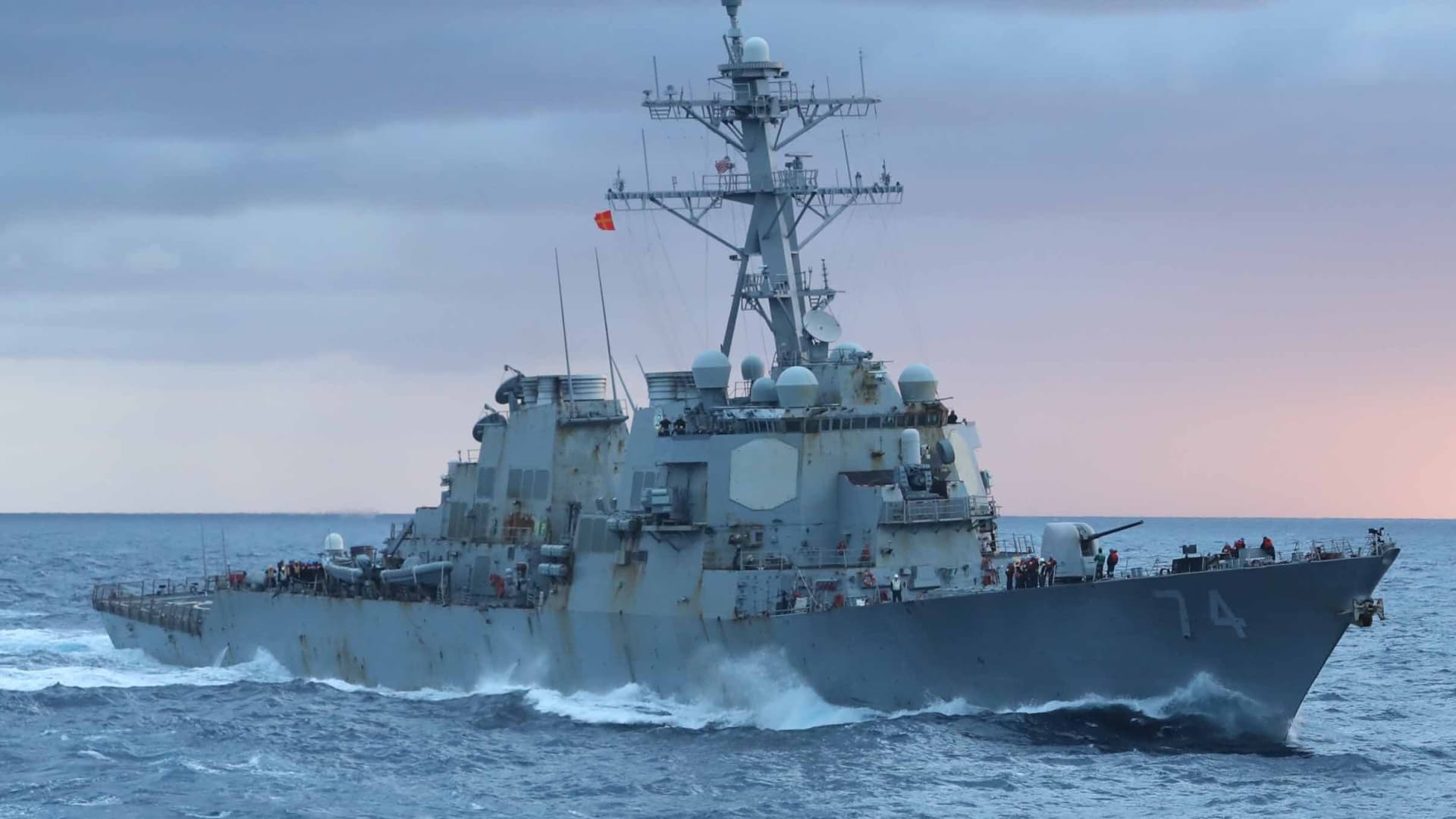The U.S. Navy is encountering a tenacious menace in the Red Sea. The Iran-backed Houthi rebels have launched wave after wave of low-cost precision weapons at vessels transiting the space, together with assaults on U.S. warships themselves.
“That’s certainly one of the issues [that] the Red Sea type of demonstrates … we by no means know the place the maritime menace may come up,” stated Bradley Martin, a senior coverage researcher at Rand, in an interview with CNBC. “And we have now to be sure we have now ample power construction to meet that. That is going to be the actual problem of the subsequent decade.”
Although the Navy has invested closely in anti-air expertise, together with most notably the Aegis fight system for the previous a number of a long time, the best missiles are additionally the most costly and tough to produce.
“You’re seeing actual proficiency and built-in air and missile protection as a result of you will have these destroyers doing the job that they had been constructed for,” stated Steve Wills, a Navalist at the Center for Maritime Strategy. “But whenever you begin to take a look at the value profit evaluation—and you’ve got to try this—over time, these grow to be costly choices. You’re speaking about taking pictures down drones that value $20,000 with a Standard Missile that is slightly over $2 million.”
As the U.S. encounters assaults by armed drones, cruise missiles, anti-ship ballistic missiles and different weapon programs in the Red Sea, the knowledge gleaned from these encounters may show invaluable in the Indo-Pacific area.
China’s People’s Liberation Army Rocket Force is a serious menace to U.S. forces in the Pacific. China’s rocket troops can doubtlessly area hundreds of missiles that may attain throughout huge swaths of the Pacific. That means the U.S. could possibly be dealing with overwhelming odds in intercepting any mass missile assault in opposition to American ships and bases.
Efforts to cover the motion of U.S. forces and misdirect or blind any reconnaissance programs may increase the Navy’s capability to defend in opposition to mass missile salvos in the occasion of a serious conflict.
“As scary as the PLA rocket power is, in phrases of the weapon programs … these items by themselves cannot discover something,” stated Tom Shugart, adjunct senior fellow at the Center for a New American Security. “They’re simply missiles on vehicles. So one thing has received to discover these targets for them.”
As the U.S. Navy more and more finds itself stretched skinny by battle in the Middle East and the rising menace from China’s navy buildup, the safety of commerce continues to be a chief accountability of America’s naval energy.
“The United States is a maritime energy,” stated Brad Bowman, senior director of the Center on Military and Political Power at the Foundation for Defense of Democracies. “We’re a buying and selling energy. American prosperity and safety will depend on the free stream of commerce, together with maritime commerce”
Watch the video to discover out if the U.S. Navy can sustain with looming missile threats from Iran and China

